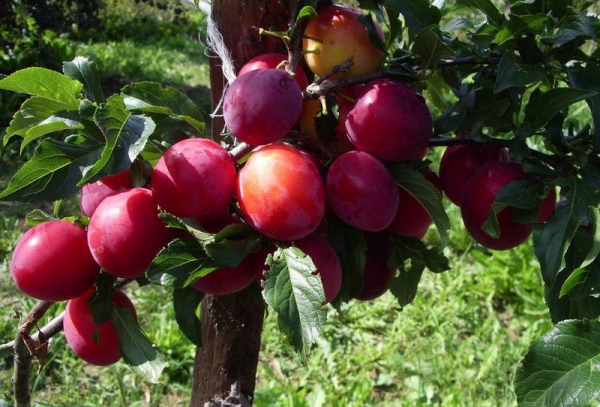Variety of red Ural plum was withdrawn by selector KK Mullayanov.
The plant is well adapted for growth in the Ural region and has good frost resistance. All varieties of the Ural plums are distinguished by their precocity and yield.
Table of contents
Description of a grade of plum red Ural
Red Ural Plum refers to varieties of medium early ripening. The height of the trees is about three meters. The plant has a lush sprawling crown, the average level of foliage. The tree has a strong healthy look.
The fruits of red plums are small, their weight reaches only 15 grams. Plum has an oval equilateral shape, with a weakly pronounced seam. The seam is subject to cracking.
The base and middle of the fruit are rounded, the top is slightly pointed. Outside, the plum is dark red, but the flesh is yellowish.
It has a fine fiber structure. The skin is well separated from the pulp. Red plum juicy sweet taste, the level of acidity is low.
Ural variety of red plum was bred by Chelyabinsk breeders at the beginning of the XXI century. This type of plum produced from the hybrid cherry plum family.
Plant able to withstand even extreme cold. It is ideally adapted for life in the harsh Ural climate.
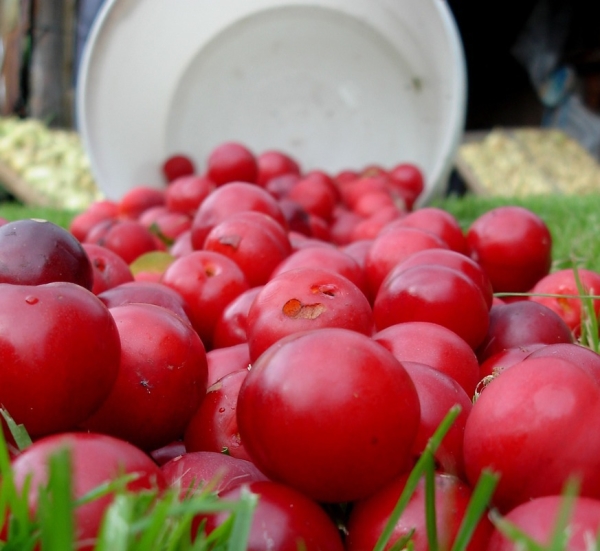
Merits
Red Ural Plum is the best pollinator for all other varieties of plums that are grown in the Urals.
In addition, it also has a number of advantages, including:
- frost resistance, the plant is able to withstand severe frosts;
- yield, from one tree under favorable conditions, you can take up to 30 or even more kilograms per season;
- the plant is not demanding on pollinators, partially self-pollinated;
- the tree has a good immunity to diseases, including kleasterniosis, which is the enemy of all garden crops;
- on the plant rarely start aphid.
All these the benefits make the red plum variety popular among gardeners.
Planting, breeding
In order for the plum to grow well and bear fruit, some important rules should be kept in mind when landing. Especially it concerns the choice of a place for planting seedlings.
Red plum is suitable for growth in harsh conditions, and yet for its landing it is required to choose southern, well-lit places. The best place will be on the hill.
In the lowlands and plains, a tree may freeze slightly. The ideal option would be the site, protected from the cold northern winds.
Articles that may interest you:
The soil for this plant must be neutral and fertile. Increased acidity will adversely affect in the future on fertility and crop yield.
The more fertile the soil is, the better the plant will take root and in the future it will provide a rich harvest.
Plum very demanding of moisture and does not tolerate drought. Therefore, it needs to be watered once every two weeks, depending on weather conditions.
but Do not overfill the plant. With an excess of moisture, the tree can stop growing.
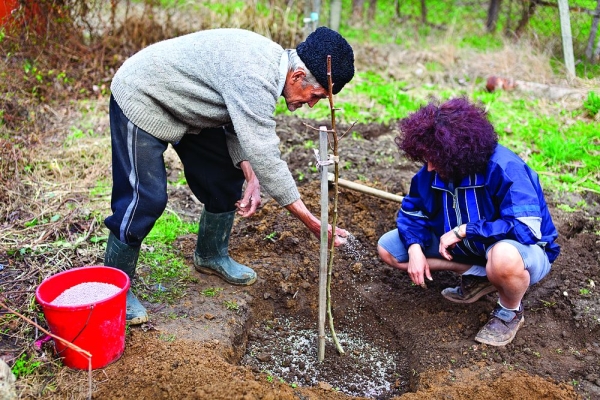
Reproduction plum carried out in different ways:
- cuttings;
- inoculation;
- vegetative way;
- understory
The best time to plant plums - early spring. Seedlings are planted in March or April.
Pits for planting prepared in advance. This is done in the fall, but you can start preparing the planting hole two weeks before planting.
The depth of the landing pit should be about 60 cmits diameter is about the same size. The contents of the pit are mixed with fertilizers; humus and peat are suitable for this purpose.
This mixture is laid on the bottom of the hole in advance, because the soil should have time to settle a little. No need to use fresh manure, it can burn the young roots of plants.
Before landing it is very important to inspect all the trees well. Particular attention is paid to the condition of the horse system, it should be well developed. Roots should not be over dried.
Saplings with damaged roots will not adapt well, it is likely that they will die.
It is important to pay attention to the trunk.. He should not have any bifurcations. Seed bark should not be damaged.
In the process of planting the seedling is lowered into the hole so so that the root neck rises above the ground at a distance of 5-7 centimeters. Then the tree covered with earth without admixture of fertilizer.
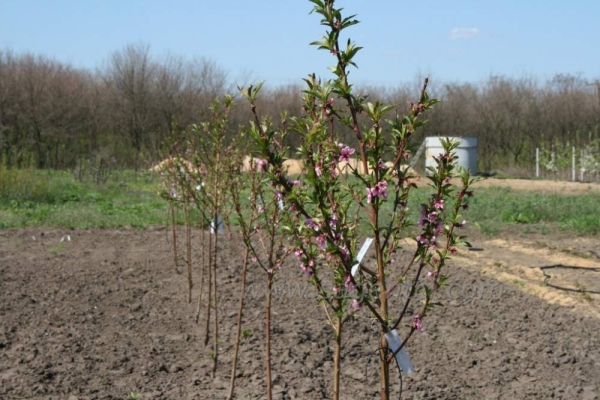
Directly under the plant some more soil is filled.Then the ground is slightly tamped, since there should be no air near the roots. This will adversely affect the condition of the roots.
The tree after planting will need to water abundantly. The next watering will need to be done in two weeks. After watering the soil must be mulched.
In the center of the pit before planting, you can drive a peg into which to fasten the plant, placing it on the north side of the peg.
Care
The young tree does not require additional feeding. Everything, that need to do in the first years of the life of the plant - this is pruning. It is produced in the spring, preferably in April or May. This procedure is aimed at the formation of the crown.
One-year saplings in the first year of life shorten up to about 70 centimeters. A year later, the conductor is cut, it should be 20 cm higher than the side branches.
A year later, another pruning is required., during which the third part of the length of the branches is cut, the conductor still has to lead.
How to cut the plum:
Also need to shed plants, pouring out under one tree from three to six buckets.
The following feeding is carried out in the summer, after flowering, make mineral and organic fertilizers. It is possible to feed the plums this way in the fall, so that they gain strength and prepare for wintering.
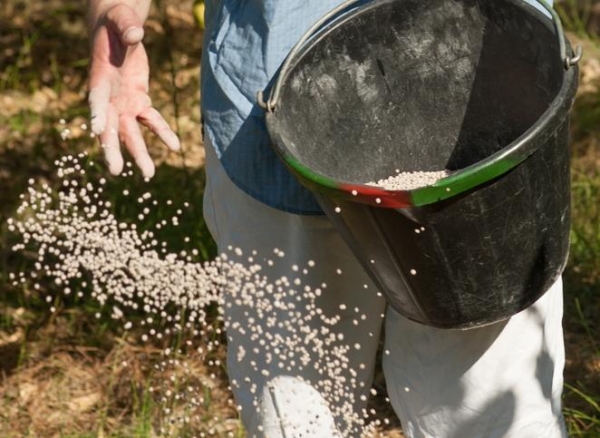
When applying fertilizer The following rules are required.:
- Soil around the tree must be loosened.
- Organic fertilizers will be needed for the plant once every four years, mineral fertilizers once every three years.
- One square meter requires about 12 kg of organic fertilizer.
- Nitrogen fertilizers are needed only in the spring.
- Phosphate and potash fertilizers are usually applied in the fall.
Plum need appropriately prepare for winter. To do this, you will need to clear the branches of dead bark and moss.
Inspect the trees for wounds and damage, if any, they will have to be treated with copper sulphate and garden pitch.
Adult plums do not require special preparation for winter. It will be enough grind with peat. Under the covering material saplings can grind, it is better not to use it.
Protection against aphids and diseases
Ural red plum a little exposed a disease that is dangerous for fruit plants, as congestion.
And yet, it is necessary to carry out prevention from this and some other ailments that are dangerous to cultivated plants.
These diseases include:
- gray rot;
- fruit rot;
- black fungus;
- monilioz;
- gamma treatment;
- milky luster.
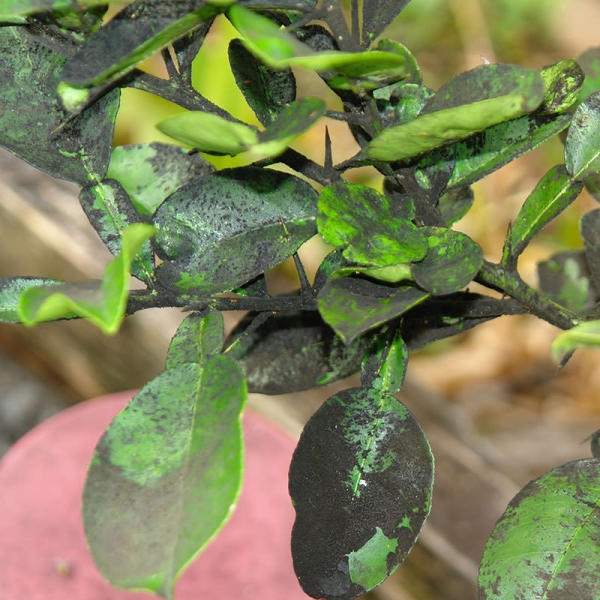
To protect the plant from disease, you will need to make preventive measures:
- It is necessary to thin out the foliage, it is very important not to allow its thickening. In the autumn, after all the leaves fall off, they need to be removed and burned.
- Affected leaves and plant parts must be removed.
- After 2 - 3 weeks, the plant is treated with Bordeaux fluid for preventive purposes, such treatment can be carried out before flowering.
- All wounds and injuries that appear on the plum tree need to be treated. Dead bark must be removed.
Many pests are dangerous for plums.. The most common of which are:
- plum and apple moths;
- goldfinder;
- ringed silkworm;
- plum aphid;
- hawthorn
All bone marrow cultures are susceptible. To avoid trouble, you need take care in advance about preventive measures.
For this:
- tree trunks are treated with lime;
- do not allow the formation of vegetation under fruit trees;
- parsley, dill and coriander scare away aphids, they can be planted near plum trees;
- spray plants with Hom or Bordeaux liquid before and after flowering.
Timely preventive measures will help to avoid diseases and harmful insects.
Ural red plum is one of the best varieties, bred Chelyabinsk breeders. It is well adapted to the harsh climatic conditions and has many advantages.
